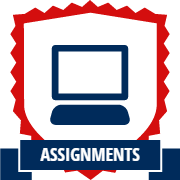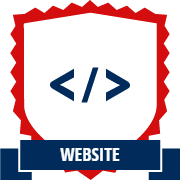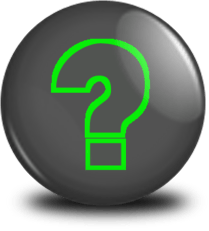|
This assignment is due by Monday, November 23, 2020 by 11:59pm.
Onogor Island is nearing completion. Construction has finished on your track and the main
exhibit has just gone up. Planning has moved on to more entertainment features for
the guests to enjoy. You have been doing a good job pleasing Amaterasu - first the awarding
of the Spiny Shell and now the main focal point of the park. It
can be seen from miles away like a beacon bringing people in.
Once again, you've been summoned to complete another task in getting ready to reopen.
Every evening we will entertain our guests with a laser and fireworks show. We need you
to create the timing and choreography for it. This show will appear at the main
attraction every evening and the show must go on. Here, take this book on pyrotechnics
and get started right away. We plan to open the park in a few days so there's not much
time.
You open the book and see written on the first page:
For this assignment, you will write an OpenGL 4.1/GLFW application that
simulates several uses of Particle Systems. You can use your Lab 10 submission as the starting point. To
facilitate this task, you will need to create a Particle class that
contains all the necessary information an individual Particle would
need to keep track of (position, velocity, etc.). You will also need
to create a ParticleSystem class that contains a list of Particles. We
can then apply a set of rules to a ParticleSystem and every Particle
in that System will follow those rules. One these rules must be
gravity. Gravity should be a force that is acting on all Particles in
the System.
There will be two different Particle System
implementations that you can choose from to implement one. Or
Multicast: you could choose to implement both
The particle system
must be placed into a Skybox using textures. Your Hero will be able to
move around your world as well to see where and how the particle
system is running. The two particle system options are: (1) Fountains
(2) Rain.
System I - Fountains
The first Particle System will simulate a fountain effect. A fountain
can be used to simulate many different components in a graphics
application (water fountain, sparks/fireworks). A fountain works by
having a source point and a cone bounding the initial direction
particles can move. Your particles will all have an initial position
equal to the System's source point (the emitter) and an initial
velocity within the System's cone. Once a particle is spawned, it will
continue along its current trajectory acting only under the force of
gravity. The particle will continue to act under gravity for the
lifespan of the particle. Once the particle's lifespan has elapsed,
the particle will die, be deleted, and no longer be a part of the System.
For this Particle System, each Particle will be a textured
transparent quad. Choose a suitable image to texture on each quad and
supply an alpha-channel texture as well for transparency on the quad.
The textured quads should also exhibit a Billboarding effect: no
matter what direction the user views the particles from, the particles
should be rotated to face the user. Remember, the particles must also
be drawn back-to-front from the user's point-of-view to display the
textured transparent quads correctly using blending.
The
actual context of the particle system is up to you. It could be a
water fountain, fireworks, sparks, etc. Ensure the context is clear
and choose an appropriate texture for each particle.
The
rules for the Particle System will be specified by a control file. A
single line will represent a single Particle System. At a minimum,
each line must specify the following information:
- Type of particle system (more below)
- Particle system source point
- Particle system max cone angle
- Particle system min & max initial velocity
- Particle system min & max lifespan
- Particle system spawn rate (# particles / second)
These parameters will create bounds for the initial values of a
Particle. A new Particle should have a random value within these
bounds. Since it is possible to have multiple types of particle
systems (like in the next part), the first parameter on the line,
the type of system, will dictate the expected input for the rest of
the line. See example following the next description. Provide an
example control file demonstrating the fountain particle system.
System II - Rain
To simulate rain, we must first create a source (emitter) for the rain
to fall from. Create a cloud that will be the holder for the Particle
System. Each drop of rain will be an individual Particle. Again, the
Particle System will have an emitter and this point will be the center
of the cloud. When a particle is spawned, it will have an initial
position within the bounding box of the cloud. Once a rain drop is
spawned, it will act with gravity as an outside force. The rain drop
must also be a textured transparent billboarded quad.
Once a rain drop
hits the ground plane, it could then create a splash. At this point,
the rain drop particle will die and spawn a new particle system. This
new Particle System should be very similar to the fountain from System
I above. The splash system will move in a cone acting only under
gravity and once the splash droplets hit the ground plane, they will
die as well.
In addition to the rain drops falling under
gravity, they could also be acting under wind. The wind should have a
direction and a speed. This additional force will be acting on the
rain drops. Give the wind a source point, a direction, and a bounding
box. If rain enters this bounding box, then it will be blown
accordingly. Think of a fan sitting in space, if rain falls in front
of the fan then they will be blown. You must be able to have some sort
of debug visual that can be toggled on and off to display where the
wind volume is. Hint: this is a basic collision detection test.
Just as above, the Particle System specifications will be done via
control file. A single line represents a single Particle System. The
line should contain the necessary information for the rain Particle
System (cloud position, cloud size, rain drops / second, wind speed,
wind direction, wind position, etc). It can now be possible to have a
single control file that specifies both a rain particle system and a
fountain particle system in the same application. An example control
file that specifies both particle systems is below:
# System Type, System Inputs
# Type = F, Fountain. System
Inputs:
# Emitter X, Y, Z, Cone Angle,
Min Velocity, Max Velocity, Min Life, Max Life,
# Spawn Rate
# Type = R, Rain. System
Inputs:
# Emitter X, Y, Z, Emitter
Width, Depth, Min Velocity, Max Velocity, Spawn Rate
F, 0,
10, 0, 15, 2.5, 4, 4, 6, 10
R, 5, 25, 10, 4, 7, 0.2, 0.4, 15
|
This will place a fountain particle system at (0, 10, 0) which
corresponds to the tip of a fountain object in our scene. There also
is a rain cloud centered at (5, 25, 10) that is dropping rain in the
distance. Provide an example control file demonstrating the rain
particle system.
While you only need to create one particle
system, you are encouraged to implement both particle systems.
The description above and setup makes each particle system static,
i.e. it has a fixed location and is always running. To truly
impress the visitors at Onogoro Island, also let your
particle system be created at your current location on command
(using some keyboard input). The particle system should then
completely die after some time as the show is finished over.
For extra credit (Follow the Leader), create a third type of particle system that
implements flocking. It is up to you to determine in what context
flocking will take place. One possible scenario is a set of birds
moving towards the lead bird (this case can be thought of in 2D). A
second scenario is a school of fish swimming towards the lead fish
(this case extends the bird scenario into 3D). Of course in whichever
scenario you think of, particles must not overlap and should make an
attempt to stay a minimum distance apart (two birds/fish cannot
fly/swim in the same spot at the same time). Whichever context you
decide on, the scene and surrounding environment should reflect the
context (fish shouldn't swim in the sky and birds don't swim in the
ocean for example). The type of flocking used should also be described
in the
README.txt
file.
FINALLY (I know it seems like a lot, but there's only a
few small pieces and many optional pieces), add a custom vertex and/or
fragment shader to each particle in your system. You must pass a
custom vertex attribute for each particle that corresponds to the
particle's current age. Use this attribute to vary the particle's
size, color, appearance, position, etc.
In your controlFile, you can specify the particle systems, the
textures to use for the skybox, the shaders to use, any objects to
load. Then with multiple control files, you can create new worlds
without having to rebuild your entire program!
Once complete, you wait for darkness to fall to test out the show.
Part II - Website
Update the webpage that you submitted with A5 to include an entry for this assignment. As
usual, include a screenshot (or two) and a brief description of the program, intended to showcase what
your program does to people who are not familiar with the assignment.
Documentation
With this and all future assignments, you are expected to appropriately document your code. This includes
writing comments in your source code - remember that your comments should explain what a piece of code
is supposed to do and why; don't just re-write what the code says in plain English. Comments serve the dual
purpose of explaining your code to someone unfamiliar with it and assisting in debugging. If you know
what a piece of code is supposed to be doing, you can figure out where it's going awry more easily.
Proper documentation also means including a README.txt file with your submission. In your
submission folder, always include a file called README.txt that lists:
- Your Name / email
- Assignment Number / Project Title
- A brief, high level description of what the program is / does
- A usage section, explaining how to run the program, which keys perform which actions, etc.
- Instructions on compiling your code
- Notes about bugs, implementation details, etc. if necessary
- How long did this assignment take you?
- How much did the lab help you for this assignment? 1-10 (1 - did not help at all, 10 - this was exactly the same as the lab)
- How fun was this assignment? 1-10 (1 - discontinue this assignment, 10 - I wish I had more time to make it even better)
Grading Rubric
Your submission will be graded according to the following rubric.
| 20% |
Particle class correctly
implemented with Particle.h file. At a minimum, there is a draw()
and update() function. ParticleSystem class
correctly implemented with ParticleSystem.h file. At a minimum,
there is a draw() and update() method. |
| 20% |
Particles exhibit appropriate movement
under gravity. Particles die once their life has expired. Particles
are properly textured billboarded quads and are sorted back to
front. |
| 15% |
Control file structure specified in README.txt
and file is read in properly. Two distinctly different control files
are included to demonstrate particle system generation.
|
| 30% |
Vertex, Geometry, and Fragment Shaders compile without
errors. Vertex Attributes are passed to shader and used to vary some
visual state of the particle. |
| 5% |
World is placed in a Skybox and user can move
around scene. Appropriate filters are applied to textures. |
| 5% |
Appropriate texturing, lighting, & materials used. |
| 5% |
Submission includes source code
and README.txt.
Source code is well documented. Webpage
named <heroName>.html submitted and updated with screenshot
from latest assignment. Submission compiles and executes in the lab
machine environment.
|
Experience Gained & Available Achievements

Assignments +100 XP |

Web +100 XP |

Multicast |

Follow the Leader
|

???
|
Submission
When
you are completed with the assignment, zip together your source code, shaders, textures,
README.txt, and www/ folder. Name the zip file, HeroName_A6.zip. Upload this file to Canvas under A6.
This assignment is due by Monday, November 23, 2020 by 11:59pm.
|





